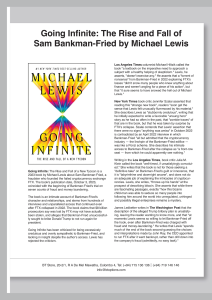By J A S K Jayakody
Marketing is a profession which has gone beyond the ‘marketing of goods and services’. The contemporary marketer is active in marketing many different types of products including governments, people and social issues. Although it is not foreign for a marketer in the developed world to accept an assignment of marketing people like athletes, singers or political candidates, it is an alien concept for m_any professional marketers in Sri Lanka. In this context, politicians seem to be the only category of people who are in one way or another marketed in Sri Lanka. Just a few months ago, Mr Jayantha Chandrasiri vividly discussed the role of marketing, or more specifically that of advertising in politics, in his film Guerrilla Marketing. It is true that ‘marketing’ appeared throughout the campaigns of b9th Mr Rajapaksha and Mr Wickremesinghe, though it is not clear as to what extent ‘marketers’ were involved in those campaigns. Therefore, it is worthwhile for professional marketers as well as all others who are interested in marketing to see whether, as Mr Weerawansa repeatedly said, the UNP attempted to market an ‘unmarketable’ product or whether the marketers of the UNP failed to market a marketable product. On the same vein, it is also worthwhile to see whether Mr Rajapaksha was ‘bought’ by the people or was made to be ‘bought’. The latter issue is what inspired this article. Therefore the focus of this article is the way that Mr Rajapaksha- the UPFA candidate that there is much more to learn from the UPFA campaign, not only for marketers, but also for voters. I believe that voters can learn how marketing induces certain behavior by analyzing Mr Rajapaksha’s campaign. It is my stance that voting for Mr Rajapaksha became a normative act for the majority of voters, as the UPFA campaign could create two psychological categories – namely the nationalist and the anti-nationalist – and elevate Mr Rajapaksha into an icon of the nationalist force against Mr Wickremesinghe who was made to represent the anti-nationalists. The UPFA campaign could reach this end using two powerful marketing tactics, namely sacralization and emotional appeal.
Manifesto Vs Candidate
In the case of a presidential candidate, the marketer is given two alternative product elements which can be promoted into the core product: the manifesto and the candidate. Therefore, the marketers of a presidential candidate can promote either the manifesto, the candidate or both as the core product. If the marketers select one of them as the core, the remaining one can be promoted as the peripheral. However, if the marketers promote both as the core, then they will have to search for another product element as peripheral to reinforce the core. In the recent presidential election, I observed that the UNP promoted the manifesto of its candidate who essentially represented the party whereas the UPFA promoted the candidate himself while pushing both the party and the manifesto into the periphery. In other words, what the UPFA campaign wanted its voters to experience is neither the manifesto nor party, but Mr Rajapaksha.
There were many possible reasons as well as advantages of promoting Mr Rajapaksha instead of the UPFA of which two are noteworthy. Firstly, Mr Rajapaksha could be ‘cleaned’ from whatever disgraces of the UPFA and the SLFP, whereas Mr Wickremesinghe, being ‘UNP’, had to carry all the disgraces of that party. Secondly, perhaps more importantly, a competitive advantage could be developed, as it was undoubtedly done, by crystallizing Mr Rajapaksha’s own strength of a Sinhala Buddhist image. Towards this end, Mr Rajapaksha, the individual, was pulled into the limelight while pushing both his party and the manifesto into the background. This was achieved mainly in three ways. Firstly, Mr Rajapaksha was separated from the UPFA and SLFP and was promoted as the ‘common candidate’ (‘of common people’). In fact, Mr Rajapaksha could be easily separated from the party due to the distance made to be seen between himself and crucial national issues such as P-TOMS throughout the last regime. Secondly, the manifesto was made to be Mr Rajapaksha’s vision and aspiration rather than that of the UPFA, and made to be something that was presented to the nation by Mr Rajapaksha himself instead of by his party. Thus Mr Rajapaksha was praised for his experience, practicality and his feeling toward the common man and woman in creating the ‘Mahinda Chinthana’. This is why Mrs Bandaranaike’s emphasis on a united country as the SLFP policy as well as Mr Wickremesinghe’s appeal to voters of the SLFP to consider its policy, were not heard. Thirdly, the majority of promotional materials and events, including the launch of his biography, were used to build an image for Mr Rajapaksha rather than to communicate ‘promises’ in the manifesto. This is why people were not receptive to not having the promises of ‘Mahinda Chinthana’ in the budget, which was promoted as the ‘Mahinda Chinthana’ budget.
Despite the popular belief that marketers can only sell products, the marketer can also mould the psyche.
Mr Rajapaksa’s campaign is a testimony to the ability of marketers, who cast both the product and the consumers’s psych to their advantage.
Anti-Nationalist Vs Nationalist
There are certain key issues that should be appropriately addressed by any marketer in his/her attempt to position his/her product, despite whether it is a bottle of carbonated drink or the prospective head of government. Among them, two issues are noteworthy.
Firstly, the marketer has to decide a location of psyche, where he/she will place the product. Secondly, the marketer has to decide the content and the form of the product, which fits into that location of consumers’ psyche. Despite popular belief that the marketers can make only products, the marketers can also make psyche or a particular location of psyche as well. Mr Rajapaksha’s campaign is a testimony to the ability of marketers casting both the product and the consumers’ psyche for their advantage.
The campaign was able to create two psychological categories, which I shall name as nationalist and anti-nationalist, and which were essentially dialectical. In fact, these two began to emerge some time back with the inception of what I shall name as the ‘Contemporary Radical Sinhalese Buddhist Movement’ by some Colombo based Buddhist monks. Though, there are many facets of this movement, it essentially revolves around ‘contemporarization’ of Buddhism in order to match Buddhism to the contemporary society or to meet the present-day responsibilities of Buddhists. The first facet is less political and oriented more towards the ‘core’ of Buddhism, while the second one is highly political; by political, I mean power and change orientation, and oriented more towards sacredness of Sinhalese Buddhist.
The JHU can be taken as one which represents this second facet. This second facet also closely aligns with another contemporary development, which I shall name as ‘nationalism’; mainly incepted by the JVP together with some Buddhist monks, some artists and some intellectuals. Nationalism contains ideologies like ‘anti-separatism’ and ‘national economy’ against the globalization of capitalism. The psychological category I named as ‘nationalist’ is the characterization of both the second facet of the ‘Contemporary Radical Sinhalese Buddhist Movement’ and ‘nationalism’. Therefore, it essentially embraces both the sacredness of Sinhalese Buddhists as well as nationalism and clearly sets apart from the anti-nationalist. However, it should be noted that the intensity of both the politically oriented sacred Sinhalese Buddhist facet and nationalism seemed to be lessened in this campaign compared to the last parliamentary election. Further, it is also noteworthy to recount the attempt of the UPFA campaign to classify ‘religious’ Catholics and Christians as nationalists while distinguishing them from missionaries.
The anti-nationalist psychological category embraces ideologies like separatism, missionaries, anti-Sinhalese Buddhist culture or more of ‘Indianization’ as well as business media culture. The UPFA campaign grouped forces or parties like foreigners or foreign countries, specially Norway who are said to support separatism, the UNP, LTTE, NGOs who were labelled as their local agents, private media stations, missionaries, businessmen who were said to support missionaries, artists who were labelled as lapai sypai artists as well as minority politicians who were said to be money oriented.
Having created these two psychological categories, the campaign showed Mr Rajapaksha as the icon of the nationalist force while showing Mr Wickremesinghe as the agent of the entire anti-nationalist forces. In other words, Mr Rajapaksha and Mr Wickremesinghe were constructed in a manner that fit into the e two psychological categories which are essentially antagonistic. However, since the focal point of this article is Mr Rajapaksha, how his campaign promoted Mr Rajapaksha into the icon of nationalist force will be discussed. Firstly, it should be noted that the campaign promoted Mr Rajapaksha into such an icon based on the Sinhala Buddhist image he already had to some extent. In fact, this particular attribute became known as, if put it in theoretical language, distinctive competence – the assets or the competence that is unique to a firm or an individual. The campaign capitalized on this image in promoting Mr Rajapaksha into the icon of the nationalist force and in setting him apart from his major competitor, Mr Wickremesinghe, to whom the campaign created the image of the agent of the entire anti-nationalist forces. Since the images created for Mr Rajapaksha and Mr Wickremesinghe as the nationalist and anti-nationalist respectively were so plain, i.e., ‘good’ and ‘bad’, that Mr Wickremesinghe became the antagonistic opposite of Mr Rajapaksha. This characterization was so vibrant that the comparative weaknesses of Mr Rajapaksha and comparative strengths of Mr Wickremesinghe were forgotten by the voters in the final comparison. It appeared that the campaign could reach this end as it was capable of sacralizing Mr Rajapaksha in highly emotional fashion. Certainly, there were many reasons for the success of this strategy, which combined sacralization and emotional appeal against the more rationalistic approach taken by the UNP campaign. Among them, the ability of these two approaches to fit into the sentimental aspect of Sri Lankans is noteworthy. Further, since the UPFA campaign could target one segment rather than many dispersed segments, which was the case for the UNP campaign, casting such a solid image for Mr Rajapaksha was made easier.
Rational Vs Emotional
Appeal In general, the UPFA campaign was more experiential than informative whereas the UNP campaign was the other way around. However, before presenting the ‘evidence’ to support this argument, I believe it is worthwhile to clarify what I mean by ‘informative’ and ‘experiential’. People can be viewed as rational, experiential, or a combination. As rational beings, humans are assumed to be goal oriented and concerned about economic benefits. Further, they attempt to reach their goal by collecting and processing information logically. On the other hand, as experiential beings, it is assumed that humans are influenced more by culture, status, esteem and fantasy, and are oriented towards symbolic and subjective aspects of behavior such as feelings, emotions, sensory pleasures and fantasies. A customer, who is oriented to be rational is more analytical and looks for details in his/her consumption decisions. In contrast, a customer who is experientially oriented is less analytical and comfortable with abstract, holistic experiences. In general, consumers in this part of the world are said to be more experiential in their consumption, thus are more responsive to emotional appeals. Therefore the Sri Lankan consumer would be more attracted by an emotional appeal than by a rational one.
Now we can look at how the UPFA campaign made voters experience its candidate – Mr Rajapaksha. Though there were many promotional materials through which the people were made to experience Mr Rajapaksha, I recall only few of them, including the poster which depicts that the kurahan satakaya crossed over Sri Lanka. The same was used in a TV commercial, and there it was shown floating around the country. Both would create a feeling that the country is secured. The launch of ‘Mahinda Chinthana’ was also closer to the hearts of the people than to their minds. TV commercials in which the candidate appeared were less informative, and were full of cultural icons such as betel leaves, lotus, paddy fields and Buddha statues as well as status symbols like the Walauwa, Mahagedera, Temple Trees, etc. Though our focus here is Mr Rajapaksha, it should be noted that even the promotional materials in his manifesto were more emotional. For instance, a TV commercial which depicts the Aluth Sri Lankawak (a new Sri Lanka), using computer graphics, shows in a highly emotional fashion how skyscrapers, highways etc, would emerge in that new Sri Lanka.
Sacralization of Mr Rajapaksa
The second aspect of the strategy adopted by the UPFA campaign is sacralization – association of its candidate with sacred objects and events. Sacralization is supposed to be a more effective way of marketing products to contemporary consumers who experience an ‘identity crisis’, and are worried about the lost sacred past and the profane today. Contemporary Sri Lankan consumers, including the Sri Lankan voters, experience a dilemma as they are fond of both the sacred life that they had and their present conspicuously consumption lifestyle. As these two desires contradict each other, the identity of contemporary consumers seems to be fragmented in various degrees, depending on their origin, and thus the consumers experience never-ending anxiety throughout their lives. The preaching of ‘nationalism’ including the so-called national economy seems to be an indicator of this identity crisis. What all these nationalistic movements, including the UPFA campaign, promise the consumers is the restoration of the sacred epoch within the conspicuous consumptions of the present day consumers. As a result, nationalistic movements treat or attempt to treat any object, event, person or time which belongs to that sacred epoch with utmost respect and reverence. Similarly, the consumers eager to restore their lost sacred past within their consumption lifestyles tend to treat those objects, events, people or time with utmost respect and reverence. Not only that, any profane object or person who is made to be associated with these sacred things will also be treated with the same level of respect and reverence. Then the question is what sacred object, event, people or time was Mr Rajapaksha associated with to make him be perceived as the icon of the nationalist force. It seems that everything that can be utilized to do so was used in the UPFA campaign. Sacralization of signing the Memorandum of Understanding with the JVP and JHU and the launch of ‘Mahinda Chinthana’ was evident through associating those events with traditional customs, the Temple of the Tooth relic, the discourse between Mihindu Thero and King Devanampiyatissa, the arrival of Mihindu Thero, etc, and the campaign utilized paddy fields, kevita (the stick used to drive the cattle), traditional costume including the Kurahan satakaya, family, and finally, the moustache of a Sri Lankan father.
To illustrate how carefully Mr Rajapaksha was marketed, I would like to draw your attention to the way he was ‘dressed’ during the campaign. It was clearly evident that the ‘marketers’ of Mr Rajapaksha were careful not to reveal him in his usual attire a Chinese collar shirt with trousers – which would damage their attempt to cast him as the icon of the nationalist force.
The UPFA campaign not only sacralized Mr Rajapaksha, but also promoted Mr Wickremesinghe as an enemy, or at least a deviant of ‘sacred Sri Lanka’. The UPF A campaign used sacred objects, people and epoch, or at least what was promoted as sacred, to cast an anti-nationalist image for Mr Wickremesinghe. For instance, the UPFA campaign utilized the traditional farmer, pagodas constructed by ancient kings, an epoch of history, etc to construct an anti-nationalist image for the UNP candidate. Since people who are making an uneasy attempt to merge both the past sacred life and present conspicuously consumption lifestyle treat these with utmost reverence and respect, they tend to treat any act leading to displace the sacredness of these objects, people and history as immoral. This is why people could be made to perceive the UNP’s promise of building the largest pagoda as an immoral act of an anti-nationalist. Similarly, the notion of the ‘modern farmer’ could be seen as an abusive act of an anti-nationalist. This is why the UNP could be made to be viewed as anti-nationalist and not having its roots in a ‘sacred Sri Lanka’. In addition, the campaign employed Juthaka bamuna, which is found in Buddhist folk literature and Prince Don Juan Dharmapala to cast antinationalist as well as a ‘black’ image for Mr Wickremesinghe. It should be noted that the Juthaka bamuna is treated as the ugliest and most hated figure in the minds of Sinhala Buddhists while the latter is viewed as a weak and tamed ruler of the anti-nationalist. The ultimate result of promoting Mr Rajapaksha as the icon of nationalist force while casting the image of an anti-nationalist for Mr Wickremesinghe was that voting for Mr Rajapaksha became a normative act for many voters.
Psyche of Voters
The psychological dynamics resulting from the creation of the two psychological categories which are essentially dialectical should be understood in light of its relation to what is known as social categorizations. Social categorization refers to the tendency of an individual to dichotomize people, including him/her into groups in terms of any momentarily meaningful social categories. Further, people tend to perceive these social categories that possess esteem in different degrees; thus in general, people like to be members of high esteem social categories. Also, people are afraid of becoming members of low esteem social categories. The two psychological categories – nationalist and anti-nationalist- were created in a manner that the nationalist social category is perceived to be having high regard or esteem while the anti-nationalist is perceived to be having low esteem. The nationalist was made to be in the high esteem social category, which was evoked using high-esteem symbols such as the Temple of the Tooth relic, the discourse between Mihindu Thero and King Devanampiyatissa and the arrival of Mihidu Thero. On the other hand, the low esteem symbols such as Juthaka bamuna and Prince Don Juan Dharmapala were assigned to the anti-nationalist. Further, the nationalist/ anti-nationalist ideology became a momentarily meaningful criterion of dichotomizing the people as the people have been perceived: firstly, as a threat against the Sinhalese and secondly, as a threat against Sinhala Buddhists. However, people were not permitted to use their free will in this social categorization, as this dichotomizing too was made by the UPF A campaign by grouping different types of people into the nationalist and anti-nation-alist forces. The UPFA campaign grouped Buddhists, the JHU, JVP, artists, intellectuals, Catholics and Christians into the nationalist social category which has high esteem. As said previously, foreigners or foreign countries, specially Norway, the UNP, LTTE, NGOs, private media stations, missionaries, businessmen, artists as well as minority politicians were grouped into the anti-nationalist social category which essentially possesses low esteem. In general, people aspire to belong to a high esteem social category while avoiding a low esteem one, and as mentioned above, the social categories were clearly dichotomized whereby people did not have to think twice in selecting a social category to be part of. Therefore, voting for Mr Rajapaksha who was elevated into the icon of nationalist force became a normative act, as it is what allows people to belong to a high esteem social category. Further, it should be noted that the anti-nationalist social force which is low esteem was perceived to be real and more coherent, people felt fear of becoming a member of it, and thus voting for it became an act of immorality.
I advocate marketers, including marketers of future presidential candidates, not to undermine the power of the competitor’s marketing communication, at least when the competitor’s marketing communication is truly persuasive.
The Dark Side of Marketing
Going back to an olden day issue of nationalist/anti-nationalist but which in some way reappeared with the identity crisis created by discourses of ‘contemporarization’ of Buddhism, conspicuous consumption and globalization, the UPFA presidential campaign transformed the voters’ decision, what should essentially be high involvement, into a low involvement one. The voters’ decision was made to simply choose between Mr Rajapaksha who led the national force and Mr Wickreme inghe who represents the anti-nationalist force. If the voters are asked why they voted for Mr Rajapak ha, one can realize the extent to which the campaign was capable of ‘blocking’ the voters’ decision-making process. There was no need of evaluation of candidates, selection of appropriate criteria or collection of information, as the campaign could make the decision on behalf of the voters. By doing so, the campaign distracted the voters away from important issues such as peace, inflation and unemployment, which were the focus of the UNP campaign. Though ‘playing’ with emotions would be an excellent strategy to win the ‘game’, it may not be good for the future of the country.
As long as future politics is concerned, what is dangerous in this campaign is its ability to create two clear psychological categories, which may essentially symbolize ‘good’ and ‘bad’. They are nationalist and antinationalist. If these two psychological categories firmly establish (or are established) among the voters, what is needed to defeat President Rajapaksha, who has been classified into the nationalist category, is to reclassify him into the anti-nationalist category. As this category is essentially ‘bad’, or even ‘evil’, no voter would want to vote for him and would probably move towards anyone who appears to be a nationalist, as it is what the voters have been made to believe is most normative.
This is not a difficult endeavor for a marketer, as marketing is nothing more than ‘playing with the mind and heart of customers’. By defining marketing as ‘playing with the mind and heart’, I do not take the stance that ‘a good salesperson can sell anything he/he wants to sell’. However, I advocate marketers, including marketer of future presidential candidates, not to undermine the power of the competitor’s marketing communication, at least when the competitor’s marketing communication is truly persuasive.






